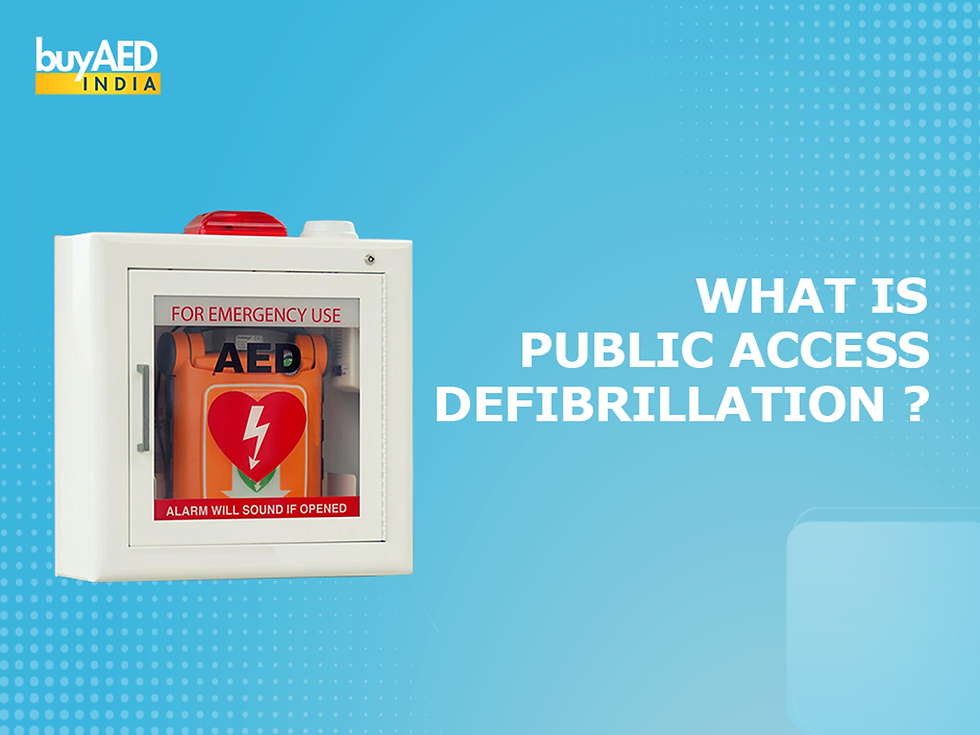What is Monophasic Defibrillator? Importance and its Uses
- Dr. Shruti Shah

- Jan 10
- 4 min read
Updated: Feb 5
Defibrillators plays a vital role in helping save lives during sudden heart attacks or cardiac arrests, serving as one of the essential resuscitation techniques used.
Of all of the monophasic types available today, one such device stands out among many as being one of the key techniques.
Although biphasic defibrillators are increasingly in demand, monophasic models remain essential in certain medical situations.
This blog will examine the key characteristics of a monophasic defibrillator, what it is, how it should be used with its strengths and weaknesses as well as why knowledge about such devices is crucial in the medical field for professionals.
What is a Monophasic Defibrillator?
Monophasic defibrillators are medical devices designed to deliver electrical shocks directly into cardiac muscle in order to combat dangerous arrhythmias such as fibrillation of the ventricular wall or pulseless ventricular Tachycardia, among others.
According to some, "monophasic" refers to the waveform of electrical current delivered via defibrillators.
Monophasic defibrillators use one current to pass from electrode to electrode across the heart in one continuous phase, eliminating unnecessary switching steps between phases.
Contrast this with biphasic devices, where current direction changes midway through an impact shock.
Why choose a monophasic defibrillator over biphasic ones? Well, here are a few reasons:
Monophasic defibrillators have a proven record of saving lives during cardiac emergencies.
User-Friendly Design: These devices feature simple designs for easy, efficient usage.
Affordable: They are more cost-effective for smaller medical facilities.
Types of Defibrillators
When it comes to defibrillators, there are two main types:
Monophasic Defibrillators: Deliver a single-directional shock to the heart.
Biphasic Defibrillators: Send shocks in two directions, making them more efficient with less energy.
Importance of Monophasic Defibrillator in Cardiac Arrest Management
During a cardiac arrest, a monophasic defibrillator can be the difference between life and death.
By delivering a timely shock, it restores the heart’s rhythm and dramatically increases survival rates.
How Does a Monophasic Defibrillator Work?
To understand how a monophasic defibrillator works, it is vital to grasp the fundamentals of defibrillation process.
The heart is an amazing organ that works by electrical signals sent via nerve cells to contract and circulate blood throughout the entire body.
If the signals do not function efficiently, this can lead to arrhythmias that prevents blood from moving smoothly through its system.
Defibrillation works by administering an electric shock that is closely controlled to the heart, briefly stopping all electrical activity so that its rhythm can resume its usual pattern.
Monophasic defibrillators deliver shock with an extremely powerful one-phase form of energy delivery.
Currents of electricity move in one direction between pads placed within a patient's chest and those outside, moving along their entire route.
Defibrillation using high energy levels typically between 200 and 360 joules for optimal results.
Objective of Depolarization Therapy in One Session.
The intention is to depolarize heart cells quickly in one session and allow your natural pacemaker to restore a more regular heartbeat rhythm.
Learn More: Can a Defibrillator Restart a Stopped Heart?
Key Advantages of Monophasic Defibrillators
Despite the technological advancements however, the single-phasic device has certain features that are effective for specific scenarios:
1. Simple Monophasic defibrillators' technology:
It makes these devices simple to use.
They are less complicated to operate than modern models, which is beneficial in situations of emergency in which it is essential to be quick.
2. Cost-Effectiveness:
The defibrillators in this category generally cost less than biphasic models.
The cost difference could be significant in environments that have limited budgets like rural clinics or hospitals in rural regions.
3. Proven Effectiveness:
Though biphasic defibrillators have become becoming more common but monophasic defibrillators enjoy an extensive history of success in usage in resuscitation attempts.
Numerous older studies that support the effectiveness for the defibrillation procedure were carried out using monophasic defibrillators.
Limitations of Monophasic Defibrillator
Despite their benefits they do have some limitations, which led to the rise of biphasic technologies:
More Energy requirements: Monophasic defibrillators need greater energy levels in order to perform efficient defibrillation processes.
This could increase the chance of injury to the heart's muscle as well as other tissues around the heart.
Lower Rates of Success Studies have shown that biphasic defibrillators, who utilize a lower energy level, have higher success in first-shock rates for preventing arrhythmias as compared to these defibrillators. This is crucial in life-saving circumstances.
The higher risk of side effects the greater energy levels utilized by monophasic Defibrillators may cause a higher risk of post-shock injuries, like skin burns or myocardial injury.
Monophasic vs Biphasic Defibrillators
Are You Deciding Between These Options?
Here's A Brief Comparison:
Monophasic shockwaves: easier, cheaper and with higher energy shockwaves.
Biphasic: More efficient, using less energy and causing minimal tissue damage.
Monophasic defibrillators remain reliable devices in certain scenarios and offer more advanced features than their biphasic counterparts.
Cost Considerations
Monophasic defibrillators tend to be more affordable than their biphasic counterparts, making them an appealing option for smaller clinics, rural hospitals and developing regions.
Why did you Choose BuyAEDIndia for Defibrillator?
BuyAEDIndia is your one-stop destination for reliable defibrillators at competitive prices.
Philips , Zoll, Cardiac Science and Defibtech products make it simple for users to locate the ideal device for homes, offices and hospitals alike. Our website is user-friendly, with quick delivery throughout India.
What sets them apart? Expert advice, training support and after-sales service.
Trusted by hospitals and schools alike, BuyAEDIndia ensures quality, safety, and peace of mind with every purchase made from us.
Conclusion
Monophasic defibrillators may not be cutting-edge technology, but they can still save lives in emergency situations.
Their ease, effectiveness, and affordability have rendered them indispensable in various settings.
At any hospital, ambulance, or rural clinic, having one available could save lives.
FAQs
1. What is the main use of a monophasic defibrillator?
Restore normal heart rhythm during cardiac emergencies.
2. How does it differ from a biphasic defibrillator?
Monophasic delivers one-directional shockwave; biphasic provides two-directional shocks for increased efficiency.
3. Where are monophasic defibrillators commonly used?
Hospitals, clinics and ambulances.
4. What energy level does a monophasic defibrillator use?
Typically, around 360 joules.
5. Are monophasic defibrillators still relevant today?
Yes, especially in cost-sensitive environments where simplicity is of utmost importance.





Comments